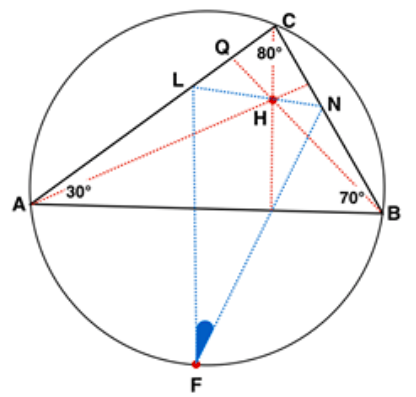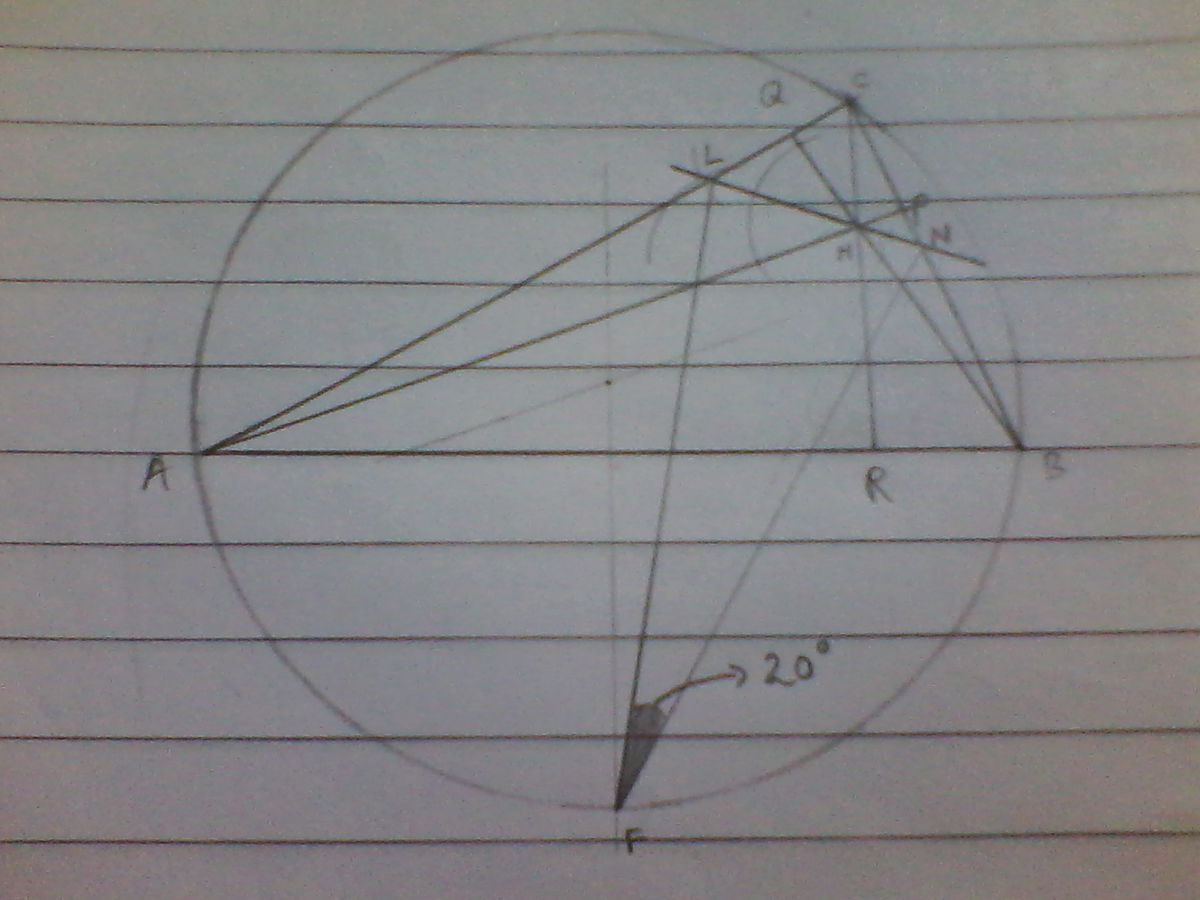Find the angle

Let be an acute triangle with angles 30, 70 and 80 (degrees) at vertices , , respectively. Altitudes and intersects in the orthocenter of . Points on sides and are such that segment contains and bisects . The point on the circumcircle of bisects the smaller arc . Find in degrees.
The answer is 20.
This section requires Javascript.
You are seeing this because something didn't load right. We suggest you, (a) try
refreshing the page, (b) enabling javascript if it is disabled on your browser and,
finally, (c)
loading the
non-javascript version of this page
. We're sorry about the hassle.

Extend A P and B Q to hit the circumcircle at S and T , respectively. It is well-known that ∠ A B C = ∠ C B S . Thus, we have N is the incenter of △ B H S . Thus, S N is the angle bisector of ∠ B S A .
Since ∠ B S A substends arc A B and F is the midpoint of this arc, we have that S N hits F . Similarly, T L hits F . Thus, ∠ N F L = 2 S T = 1 8 0 ∘ − 2 ∠ C = 2 0 ∘